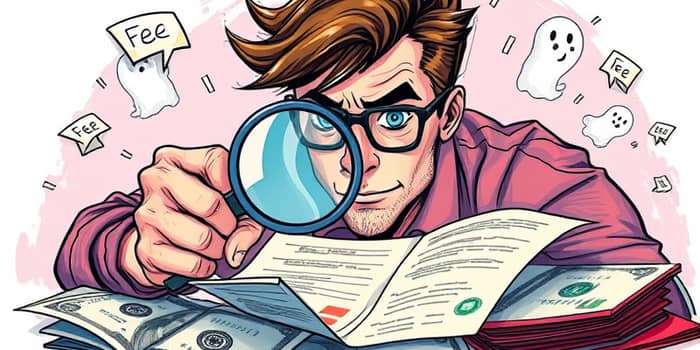
Loans often appear straightforward, but beneath the surface can lie a maze of fees and penalties that dramatically inflate your borrowing costs. Being aware of these hidden expenses is essential to protect your hard-earned money and maintain financial security.
Many common loan products mask extra charges in their fine print, leading borrowers into unexpected debt traps. Recognizing which loans carry the greatest risk is the first step toward informed decision-making.
Loans from unregulated or non-reputable lenders are particularly dangerous, since they often include hidden charges and nontransparent terms that can catch you off guard.
Beyond the advertised interest rate, lenders may tack on a variety of fees that accumulate quickly. Understanding each fee type helps you calculate the true cost of borrowing money.
These charges can quickly turn a reasonable loan into a heavy financial burden. Always ask for a breakdown of every potential fee before signing.
To illustrate how fees multiply, consider a borrower taking a $300 payday loan at $15 per $100 borrowed. Over two weeks, this equals a nearly 400% APR. Rolling it over four times increases fees to $90 for just four weeks of access.
Meanwhile, a $500 credit card cash advance can add hundreds more in interest and upfront fees if not repaid immediately. And home equity lines of credit (HELOCs) averaged 9.17% in May 2024, while fixed home equity loans were 8.66%. By comparison, credit cards often exceed 20% APR.
A low credit score can also multiply costs. On a $20,000 auto loan over five years, a borrower with poor credit might pay more than $5,000 extra in interest compared to a prime borrower.
Unscrupulous lenders use tactics to obscure true costs, including burying fees in dense disclaimers or failing to provide complete disclosures.
By recognizing these ploys, you can question every unexpected line item and avoid being blindsided.
Beyond direct loan fees, indirect expenses can creep in. Automatically bundled credit insurance costs may seem harmless but inflate your payments. Similarly, prepaid debit card charges and ongoing membership requirements can add up over time.
Small business loans often include setup or maintenance fees, while medical debts might require refinancing at even higher rates when insurance falls short.
Certain conditions amplify these risks. A low credit score triggers higher interest rates and fees, while urgent financial needs push borrowers to accept unfavorable terms without comparison shopping.
Loans from online peer-to-peer platforms or payday lenders face less oversight, increasing the likelihood of deceptive practices.
Arming yourself with knowledge and a critical eye can turn the tide in your favor. Follow these guidelines to ensure you borrow wisely:
Seeking non-loan alternatives, like budgeting adjustments or credit counseling, can also prevent you from entering high-cost debt cycles. A comprehensive loan comparison across multiple offers may save thousands over the life of the borrowing.
Certain groups are especially susceptible to hidden costs. Young adults, parents managing household expenses, and those with limited credit histories often resort to high-interest loans in emergencies.
Medical debts, home repairs, or business startup needs can push vulnerable borrowers toward quick-cash solutions that carry monthly and transaction fees far above their initial expectations.
While loans can be powerful financial tools, overlooking hidden fees transforms opportunity into hardship. By educating yourself on every applicable charge, you retain control over your finances and avoid unpleasant surprises.
Always consider the complete cost of borrowing money, not just the interest rate. Vigilance, comparison, and negotiation are your best defenses against fees that erode your financial health.
Empowered with these insights, you can borrow confidently, protect your resources, and chart a secure financial future.
References













